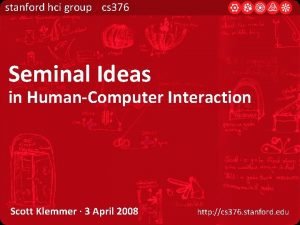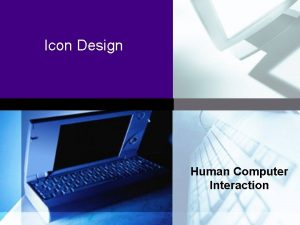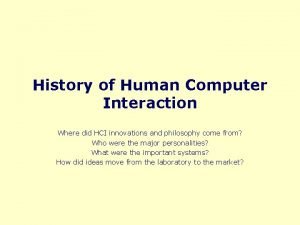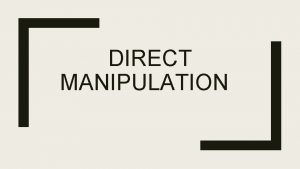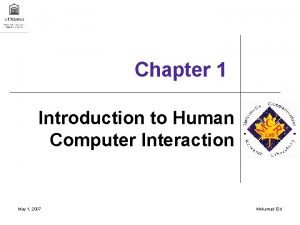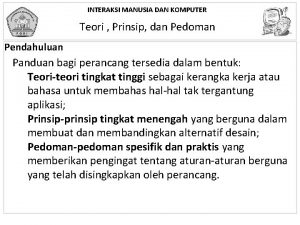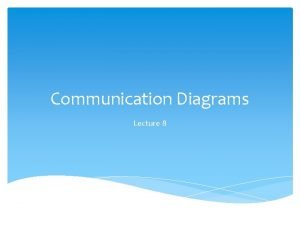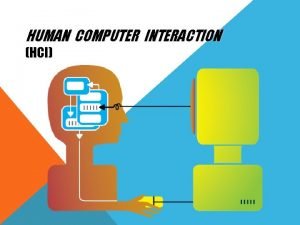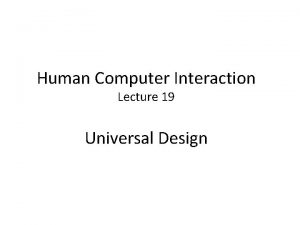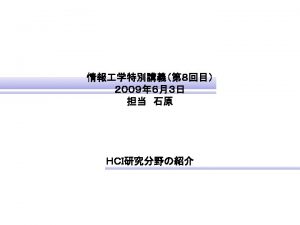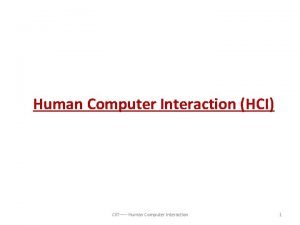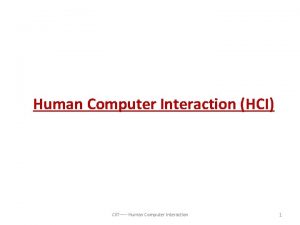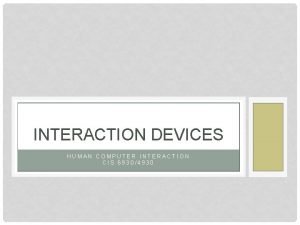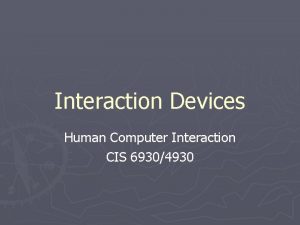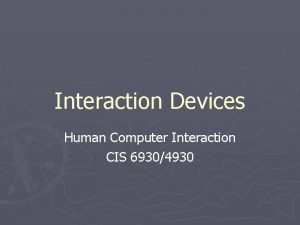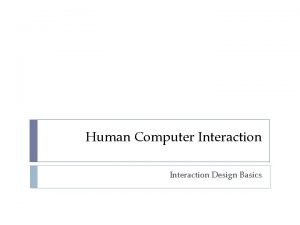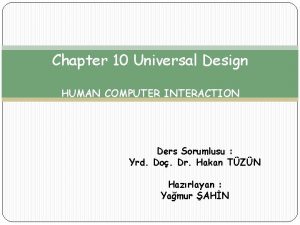Human Computer Interaction Lecture 20 Universal Design Speech














- Slides: 14

Human Computer Interaction Lecture 20 Universal Design

Speech Synthesis: useful? Successful in certain constrained applications when the user: – has few alternatives Examples: • screen readers – read the textual display to the user – utilised by visually impaired people • warning signals – spoken information sometimes presented to people whose visual and haptic skills are already fully occupied

Non-Speech Sounds bangs, squeaks, clicks etc. • commonly used for warnings and alarms • Evidence to show they are useful – Simple error sounds in windows xp. – video games harder without sound • Language/culture independent, unlike speech

Non-Speech Sounds: useful? • Dual mode displays: – information presented along two different sensory channels – redundant presentation of information – resolution of ambiguity in one mode through information in another • Sound good for – temporary information – background status information e. g. Sound can be used as a redundant mode in the Apple Macintosh; almost any user action (file selection, window active, disk insert, search error, copy complete, etc. ) can have a different sound associated with it.

Auditory Icons • Use natural sounds to represent different types of object or action • Natural sounds have associated semantics which can be mapped onto similar meanings in the interaction e. g. throwing something away ~ the sound of smashing glass • Problem: not all things have associated meanings • Additional information can also be presented: – soft sounds if object is hidden or action is in the background

Sonic. Finder for the Macintosh • items and actions on the desktop have associated sounds • folders have a papery noise • moving files – dragging sound • copying – sound of a liquid being poured into a container rising pitch indicates the progress of the copy • big files have louder sound than smaller ones

Earcons • Artificial sounds used to convey information • Structured combinations of notes represent actions and objects • Notes combined to provide rich information – compound earcons – multiple notes combined to make one more complicated earcon

Earcons (ctd) • Family earcons similar types of earcons represent similar classes of action or similar objects: the family of “errors” would contain syntax and operating system errors • Earcons easily grouped and refined due to compositional and hierarchical nature • Harder to associate with the interface task if there is no natural mapping

Touch • Haptic interaction – Cutaneous (skin related) perception • physical sensation; vibrations on the skin – kinesthetics • Body movement and position • Information on shape, texture, resistance, temperature, comparative spatial factors • Example technologies – electronic braille displays (for blind people) – force feedback devices e. g. Phantom

Handwriting recognition Handwriting is another communication mechanism which we are used to in day-to-day life • Technology – Handwriting consists of complex strokes and spaces – Captured by digitising tablet • strokes transformed to sequence of dots – large tablets available • suitable for digitising maps and technical drawings – smaller devices, some incorporating thin screens to display the information • PDAs such as Palm Pilot • tablet PCs

Handwriting recognition (ctd) • Problems – personal differences in letter formation – Co-articulation(putting into words) effects • Current state: – usable – even without training – but many prefer keyboards!

Gesture • Applications – gestural input - e. g. “put that there” – sign language • Technology – data glove – position sensing devices • Benefits – natural form of interaction – pointing • problems – user dependent, variable and issues of gestures.

Users with Disabilities • Visual impairment – screen readers, Sonic. Finder • Hearing impairment – text communication, gesture, captions • Physical impairment – speech I/O, eyegaze, gesture, predictive systems (e. g. Reactive keyboard with predictive typing aid) • Speech impairment – text communication • Dyslexia (disorders that involve difficulty in learning to read or interpret words) – speech input, output • Autism – communication, education

Cont. . . • Age groups – older people e. g. disability aids, memory aids, communication tools to prevent social isolation – children e. g. appropriate input/output devices, involvement in design process • Cultural differences – influence of nationality, generation, gender, race, class, religion, political influence etc. on interpretation of interface features – e. g. interpretation and acceptability of language, cultural symbols, gesture and colour
 Mit csail hci course review
Mit csail hci course review Icon based logo
Icon based logo Paradigms in hci
Paradigms in hci Human input and output channels in hci
Human input and output channels in hci History of hci
History of hci Direct manipulation interface
Direct manipulation interface Hci chapter 1
Hci chapter 1 Uhcd adalah
Uhcd adalah Prinsip interaksi manusia dan komputer
Prinsip interaksi manusia dan komputer Human computer interaction syllabus
Human computer interaction syllabus Pengertian hci
Pengertian hci Alan dix hci
Alan dix hci Communication diagrams
Communication diagrams Ergonomics in human computer interaction
Ergonomics in human computer interaction Definition of human computer interaction
Definition of human computer interaction
